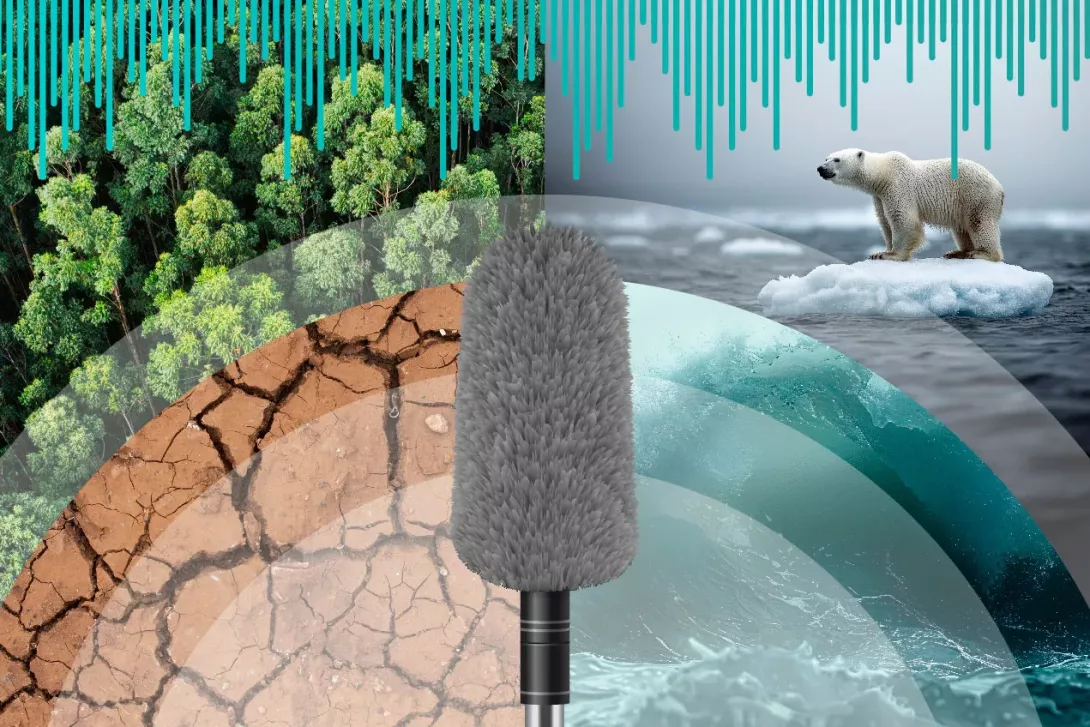
Header image credit: UNESCO
Climate change presents an existential threatto mankind, demanding immediate and sustained action from governments, organizations, and individuals alike. Amid the swirl of digital platforms, social media, and streaming services, one seemingly old-school medium remains uniquely positioned to make a significant impact.
That’s broadcast radio.
Often overlooked in the discourse on climate action, the good old-fashioned airwaves remain a dynamic and far-reaching tool for raising awareness, promoting sustainable practices, and amplifying diverse voices in the fight against climate change.
Radio broadcasts, of course, also spread widely heard, effective, early warnings on impending disasters.
World Radio Day, celebrated every 13 February, highlights the technology’s critical role in providing widescale public access to essential information. This year’s theme, Radio and Climate Change, underlines how the familiar broadcast medium can raise awareness, disseminate alerts, drive action, and help build environmental and socio-economic resilience globally.
Radio’s unbeatable reach
Radio remains one of the world’s most widely accessible forms of media. With over 44,000 radio stations and billions of listeners worldwide, its penetration across rural, urban, and remote areas is unparalleled.
Moreover, it still reaches more widely – and updates people in isolated communities more quickly – than any other communication technology.
Unlike Internet-based media, radio requires no high-speed connection or expensive digital devices. A simple battery-powered or solar-powered radio can provide a lifeline of information to communities without reliable electricity or internet access.
This makes radio especially critical in developing nations and underserved regions, where it serves as a bridge to information and education for millions of people. Through that indisputable reach, radio empowers communities to take action – before, during and after a disaster.
Beyond emergency alerts, education and awareness are fundamental for climate mitigation and adaptation. Radio broadcasts inform and engage their listeners through news segments, interviews with experts, and compelling storytelling. Community radio stations are key to promoting sustainable agriculture, water conservation, and disaster readiness, offering culturally and contextually relevant, and practical solutions that resonate deeply with local audiences.
In areas susceptible to extreme weather events, radio stations have proven essential for warning people in a timely manner, announcing evacuation procedures, and conveying real-time updates on life-saving humanitarian assistance.
Leaving no one behind
Climate change disproportionately affects vulnerable populations, including indigenous communities, farmers, and women. Yet the same groups are often excluded from mainstream conversations.
Grassroots radio programmes often air those voices first, sharing their experiences, concerns, and solutions.
Undoubtedly, radio must innovate to stay relevant in today’s fast-growing digital world. But the challenges of changing times also present opportunities.
Integrating radio with digital technologies — in formats like podcasts, social media, and mobile apps — expands its reach in new ways and engages new listeners.
Cooperation in tech and communications
Collaborative efforts between governments, civil society organizations, and the private sector can further boost the role of broadcast radio in climate communications, leveraging it as a vital force for change.
The International Telecommunication Union (ITU) has 160 years of experience in fostering international cooperation and technical standardization on communication technologies – all the way back to the telegraph.
Our key role in managing the radio-frequency spectrum and helping advance broadcasting technologies dates to 1906.
As a specialized agency of the United Nations for nearly 80 of those years, ITU works hard to level the playing field for developing countries and ensure the benefits of advanced communication networks are available to all.
How ITU enables radio
Along with ensuring equitable access, ITU spectrum management prevents interference between different radio services, including broadcasting, telecommunications, and satellite communications.
ITU’s Radio Regulations, updated via regional and global negotiations every four years, define the technical and operational requirements for use of the radio spectrum, providing the basic legal framework for radio broadcasting.
ITU also develops and promotes technical standards for broadcasting, including modulation techniques, signal quality, and transmission technologies. Our standards ensure compatibility and interoperability between equipment from different manufacturers and across borders.
Evolving and updating
ITU has been instrumental in the world’s transition from analogue to digital broadcasting, introducing standards like Digital Audio Broadcasting (DAB), Digital Radio Mondiale (DRM), and In-band on-channel (IBOC), all of which improve sound quality, spectrum efficiency, content delivery, and power efficiency.
We oversee regional agreements like the Geneva Plans (GE84 and GE06), which define the allocation and usage of frequencies for radio and television broadcasting across regions.
And we make sure governments fully understand the value of broadcast radio in emergency communications and keep frequencies reserved for public safety and disaster response.
Today, as ever, our regulatory frameworks and standards, as well as our work to ensure everyone benefits from groundbreaking technologies, significantly shape the evolution of broadcasting. ITU also helps broadcasters ensure radio keeps serving people with timely information, education, and entertainment worldwide.
On this World Radio Day, let us celebrate the enduring power of radio broadcasting to bring people together and meet the climate threat.


